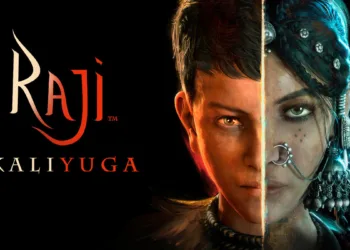For the longest of times, video games were an entity completely separated from our reality. Early video games were entirely offline. You had to buy a game, install it, play it, and when you switch it off, any connection with the real world stops. Sure, the thoughts of the game may still linger in your mind for a while, but that was about it.
Movies like The Matrix prophesied this might change at one point, but the current situation is beyond what was depicted there. The line between the game and the world is no longer as clear as it once was. Here are the top five examples.
6 Examples of Why the Line Between Real World and Video Games Is Blurrier than Ever
- Photorealistic graphics
There’s a reason why so many people are playing video games today compared to the past. Sure, the fact that there’s no longer a societal stigma is a huge deal, but there’s another reason for a strictly technical nature. Due to photorealistic graphics, you no longer need as much imagination to get immersed in the game.
It took a child’s imagination (or a nerd) to see a chaotic group of pixels as a dragon, a castle, or a fire bolt. Today, you can almost feel the heat of the dragon’s breath, and looking down from the castle wall may make you dizzy.
The thing is that with new GPUs, incredible game engines, and more powerful monitors, the line between the real world and video games is getting hard to spot.
We’ve all seen how good AI tools are getting at generating images and faces of people who never existed. Imagine this coupled with body language and gestures from game franchises like Far Cry or Call of Duty. Just how insanely realistic would this look?
Keep in mind that it might not be long until the future of animation (and even live-action) is changed forever through this technology. While some may look forward to it, others may be concerned.
- AR
AR games are incredible because they can erase the line between the real world and a video game. What does this mean? You have a game like Pokemon Go as a perfect example. In the real world, you go out there and hunt for Pokemon. You use your smartphone to “see” them and use interactive options to catch them.
While some may believe that this might get kids outside of their rooms and out playing like they used to, the truth is that this is hardly a new concept.
Take, for instance, an app like “Zombies, Run!” This is a fitness app cleverly disguised as a video game. The way it works is simple, you hear the noise of zombies and start running. The faster you run, the “further away” you are from them, which you’re notified of because you don’t hear them as loudly. This is an amazing interactive experience that helped a lot of people lose weight. Once again, this is not the only such app in existence.
The main reason why we needed to mention it is because AR stands for augmented reality. This reality doesn’t have to be augmented through visual means.
Another reason AR is so great is that it requires smartphones (which almost everyone has), whereas its VR counterpart still relies on hardware that most people don’t possess.
- Real-world rewards
There are a lot of video games in 2023 offering real-world rewards.
You see, even in the past, when WoW was still huge, some people came up with a business model to “farm” gold in-game and sell it for real-life currency. Gold was never hard to come by, but it required grind. The problem is that there were a lot of casual players who worked their day job shifts and didn’t have the time for this type of grind. They did have real-life currency (they don’t play as much because they’re working, after all).
This model was so successful that there were a lot of massive gold farms (especially in China), which yielded massive profits.
Then, probably thought by this previous example, in Diablo III, there was an auction house where you could buy in-game items and rewards directly for real-life currency. Since Diablo IV is now here, this trend is bound to continue going strong.
Today, in the world of crypto and mobile games, play-to-earn games are becoming increasingly popular. These play-to-earn games range from performing real-world tasks and gamifying old-school corporate reward programs to playing mobile games to get real-world rewards.
- E-sports
E-sports is quickly approaching traditional sports in many aspects. World Cup in games like League of Legends can fill stadiums. There are kids across the globe with wallpapers and posters of famous e-sports players, some even tattooing them like they would any other celebrity.
E-sports are also attracting a lot of mainstream sponsors. These tournaments’ prize pools are getting substantially so high that some smaller sports (not football, soccer, basketball, etc.) can’t even close.
It’s not just that. You see, being a member of an e-sports team requires a great sacrifice. Team members usually leave their homes to live in club-owned houses, which is not that dissimilar to a training camp. Here, they have a mandatory daily gym (just as much as they need to boost their cognitive abilities and reflexes), professional trainers, strategists, and even chefs and nutritionists.
For more and more kids, e-sports are quickly becoming more than a pastime. If anything, this has become a potential career. Even coaching and streaming video games can become a profession, which is an extra incentive to take this seriously (sometimes even too seriously).
- Fantasy leagues
One unique thing about fantasy leagues is that they are video game algorithms that heavily rely on real-world outcomes.
The way this works is simple: you’re playing a basketball fantasy league. You select your team, wait for that week’s games and get the statistical score of each player. Then, all their scores are combined, which is your team score for the week. On that week, your team is supposed to face off against the team of one of your colleagues/friends, and whoever gets the higher score wins. This means that your team has won and gained appropriate points.
There are two reasons why this is so important and indicative. First, it makes you follow the sport in question more closely. Second, the number of people playing fantasy sports games is off the charts. According to one estimate from December 2023, approximately 59 million people are playing these games.
For some people, participating in a fantasy league has reignited their interest in the respective sport. Others have entered that particular sport for the very first time.
Besides being a fun game, this is also a significant social activity. Speaking of which…
- Simulations and a social dimension
Online video games have transcended the level of mere pass time. Online video games are an alternative to social media. Just think about it, meeting a new person in a game means meeting someone who already shares one of your interests (and it’s never just one). It also means meeting someone with whom you already have a structured model of passing the time. No more idle chatter trying to find one common topic or difficult ice-breaking.
As many as 46% of respondents to a 2022 survey stated that they’ve met a good friend or a significant other (even a spouse) via a video game. This number is bound to continue growing.
Now, hanging out online is not everyone’s cup of tea; however, a few years back, there was no choice during the pandemic. Even people who had never played games started spending time together in a simulated environment. Still, even before, there were a lot of people who mostly socialized online in games like Second Life.
One of the advantages of the social aspect of video games is that it’s incredibly cheap. You can buy an AAA game for as little as $20 on a sale. You can get hundreds of hours of gameplay if it’s a multiplayer game.
Video game influence in the real world is stronger than ever
Video games are not just our favorite pastime; they’re becoming much more. This trend is bound to keep picking up momentum in the future, as well. Fame, relationships, and even monetary gain can translate into the real world.








